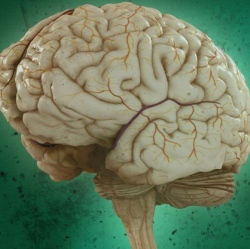
Why do the brains of up to 30 percent of autistic people grow faster than usual, early in life? A new study by Salk Institute scientists has used a new stem cell reprogramming technique. The team found that stem cell-derived neurons made fewer connections compared to cells from healthy individuals.
The scientists were also able to restore communication between the cells by adding IGF-1, a drug currently being evaluated in clinical trials of autism. Autism affects approximately 1 out of every 68 children in the United States. It is characterized by problems communicating, difficulties interacting with others, and in repetitive behaviors, although the symptoms range dramatically in type and severity. There is no known cause of autism, according to the scientists.
Led by senior investigator Rusty Gage, a professor in Salk’s Laboratory of Genetics and holder of the Vi and John Adler Chair for Research on Age-Related Neurodegenerative Diseases, the researchers created stem cells from a subset of people with autism whose brains had grown as much as 23 percent faster than usual, but had subsequently normalized.
The neuron precursor cells derived from the patients multiplied faster than those of typically developing individuals. The finding supports a theory some experts have put forth that brain enlargement is caused by disruptions to the cell’s normal cycle of division, the researchers say. In addition, the stem cell-derived neurons of individuals with autism behaved abnormally, bursting with activity less often compared with those cells of healthy people.
Those neurons’ activity seemed to improve by adding IGF-1, which is known to enhance the connections between neurons. The group plans to use the patient cells to investigate the molecular mechanisms behind IGF-1’s effects, in particular probing for changes in gene expression with treatment.
Other authors on the study include researchers from the University of California, San Francisco; the University of California, Los Angeles; the University of California San Diego; Case Western Reserve University, University of Rochester School of Medicine and Dentistry, and Icahn School of Medicine at Mount Sinai.
